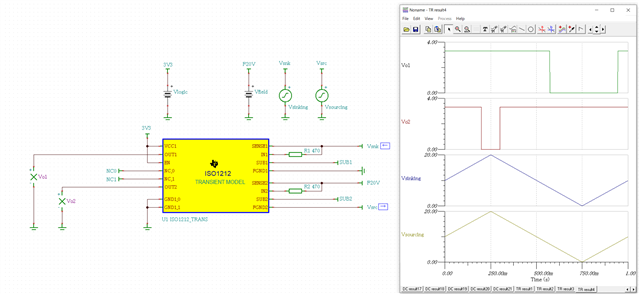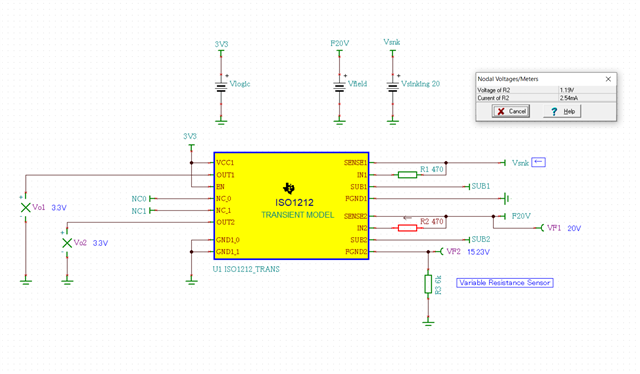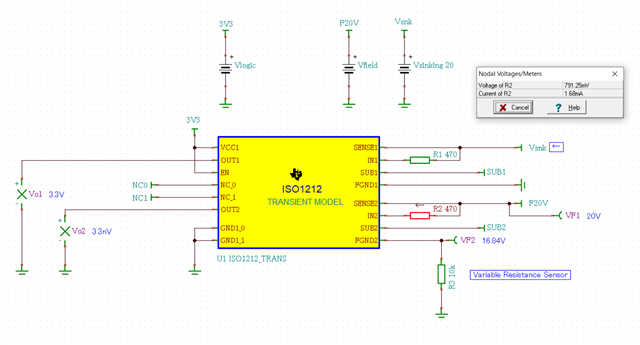Tool/software:
I am considering an application with CHANNEL 1 = SINKING and CHANNEL 2 = SOURCING.
My understanding of SINKING (CH1) thresholds:
Assuming no RTHR resistor, the ISO1212 has an input threshold of >8.55V ON and < 6.5V OFF referenced to 0V (FGND1).
I understand this is the ΔV between SENSE1 and FGND1 (in this case, FGND1 = 0V, so SENSE1 simply needs a positive voltage following the above-mentioned thresholds)
Correct?
My understanding of SOURCING (CH2) thresholds:
Assuming no RTHR resistor, the ISO1212 has an input threshold of >8.55V ON and < 6.5V OFF referenced to 24V (SENSE2).
I understand this is the ΔV between SENSE2 and FGND2 (in this case, SENSE2 = 24V, so FGND2 needs a low-impedance to GND to pull it's voltage low, generating the needed ΔV.
Correct?
I ask because with the SPICE simulation model, I see the output can go HIGH when the ΔV between SENSE2(24V) and FGND2 is greater than 5V or so.
Is this due to the model's characteristics, or do the thresholds change?
*image removed




